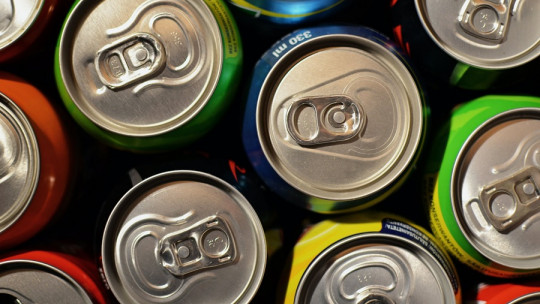When we think about an addiction, it is likely that the first thing that crosses our mind is the image of a person who presents problematic consumption of a chemical substance, such as alcohol or nicotine. But not all addiction involves the ingestion of substances. In fact, people can become addicted to an infinite number of environmental stimuli that, furthermore, are not foreign to the sociocultural context in which we are immersed. In today’s Western societies, mass access to the Internet and information and communication technologies has become a double-edged sword. On the one hand, the digital age has provided our daily lives with a wide range of possibilities and comforts; But on the other hand, it brought with it the massification of social networks and video games, stimuli capable of sucking us in front of the screens for many hours, more than we would like of our own will.
Although the excessive use of technologies is harmful to physical and mental health, it is not in itself pathological. However, when a person loses control over their own actions, they experience anxiety and irritability when they cannot access the stimulus that generates pleasure—the smartphone, for example—and the excessive time dedicated to said stimulus affects their other areas. such as work, studies, or interpersonal relationships, you are likely to have a behavioral addiction.
The number of people who have behavioral addictions has been increasing in relation to the advancement of the latest technological developments, but it is not limited to that domain. We can also become addicted to gambling, sex or shopping. This is due, as we will see below, because There is a mechanism rooted in our neurobiology, the reward system to which we can attribute the fact that human beings—and other species—are potential victims of behavioral addictions.
What is the reward system and what is it for?
The reward system is a set of neural pathways that enable the transmission of information between different areas of our central nervous system that, when activated, cause us to experience a sensation of pleasure. This happens in the presence of certain environmental stimuli that our brain classifies as useful for survival, so that The activation of the reward system causes us to be exposed again to these pleasurable stimuli in the future
Having a reward system has been fundamental at an evolutionary level since, as we pointed out, the stimuli from which we experience pleasure are the same ones that could serve to ensure our survival. For example, eating and drinking activate our reward system as they enable nutrition; Sex does the same since it is necessary to reproduce; or the social bond with others since we need belonging to groups to face the challenges of the environment.
The structures and neurotransmitters involved in the reward system
To understand how behavioral addictions alter our reward system, it is necessary to know what structures make it up. Broadly speaking, these are the following:
1. Ventral tegmental area
Normally, its activity is inhibited by the effect of GABA, the main inhibitory neurotransmitter of our nervous system When the presence of a pleasant stimulus is perceived, such as food when we are hungry, this inhibitory effect on the ventral tegmental area ceases, and the neurons in said area begin to produce dopamine. Dopamine is the main neurotransmitter involved in the activation of our reward system, and it is what generates pleasure.
2. Nucleus accumbens
It is a subcortical brain nucleus, part of our limbic system, whose function is the integration of emotional and motor information. In the nucleus accumbens there are receptors for dopamine from the ventral tegmental area, but it can also synthesize it, allowing communication with the prefrontal cortex, among other areas.
3. Prefrontal cortex
The prefrontal cortex is the area of our brain to which they are functionally associated our higher cognitive abilities, such as problem solving and voluntary attention , but also the executive functions characteristic of our species. Some of these are working memory, cognitive flexibility, inhibitory control and decision making. Such faculties are put into practice to ensure the repetition of the behavior that gave us pleasure.
Alteration of the reward system in behavioral addictions
Now, we know that the reward system is activated in the presence of stimuli relevant to survival, which makes us feel good. The problem with substances or behaviors that become addictive is that, despite not being necessary to ensure survival, our brain perceives them as if they were and develops a tendency to repeat them. Thanks to another neurotransmitter, glutamate, excitatory and very important for learning and memory consolidation , a synaptic imprint is fixed that reinforces such behavioral repetition. It was once believed that activation of the reward system only applied to chemical addictions, but there is growing support for the idea that many behavioral addictions also achieve this.
On the other hand, as the person who suffers from a behavioral addiction seeks to continue with his or her problematic behaviors due to the activation of the reward system, there begins to be an abundant, recurrent and sustained presence of certain neurotransmitters such as dopamine that is not intended for the nervous system. . Consequently, the receptors for these neurotransmitters will be saturated, decreased and altered, as the nervous system is adapting to the brain chemical modification resulting from addiction.
The problem is that, as the subject carries out the behavior more frequently, the pleasure they obtain from that same stimulus begins to be insufficient. This It is due to the brain chemical alteration that we mentioned Therefore, he is forced to play more and more slot machines or spend more hours on the phone in order to feel the same pleasure, but damaging his nervous system at the cost of it. It is a circuit that enslaves the person, since to have a similar gratification, more and more of that behavior is needed, which could reach the point of being the only relevant thing in his life. It is common for the activities he used to enjoy to now be boring. This is logical if we take into account that, as the addict gets used to such intense stimuli to feel some pleasure, the “other pleasures” are insufficient.
Finally, the addicted person has difficulty maintaining abstinence since the chemical changes in the brain do not allow them to sustain the decision to stop doing a behavior that, in the long term, will harm them and their close circle of friends. As we mentioned, the prefrontal cortex is associated with our executive functions. One of them is inhibitory control , that is, the ability to inhibit certain behaviors that are socially inappropriate or incongruent with our rational purposes. In the addicted brain, inhibitory control is deficient: the person cannot control their impulses to carry out this problematic behavior, and if they do, they experience high levels of irritability and anxiety typical of withdrawal.
Recovering from a behavioral addiction is as difficult as recovering from a chemical substance addiction, since the neurobiological substrate that is affected is the same. Knowing this information is vital to understand that it is not a mere question of will, as many people close to the addict believe, but rather a dependency that is anchored in our human biology. Recognizing the complexity of this issue is not intended to be hopeless, but rather to raise awareness about the importance of consulting with an interdisciplinary mental health team as soon as possible to recover from behavioral addiction.









